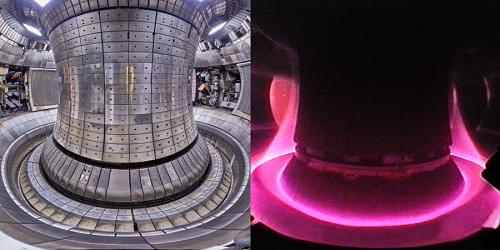A mechanism for preventing destructive instabilities in magnetically confined plasmas provides a new way for scientists to operate future nuclear-fusion reactors.
All magnetically confined plasmas naturally develop instabilities, regions where small perturbations grow rapidly [1]. Scientists have been looking for ways to prevent instabilities in a tokamak—a leading candidate for a fusion reactor—because the instabilities can cause substantial damage to the tokamak’s walls. Now Georg Harrer at the Vienna University of Technology and his colleagues have shown how these destructive instabilities can be avoided by adjusting the properties of the plasma and its confining magnetic field [2]. The researchers’ findings offer a fresh approach to running future fusion reactors.
A tokamak uses a powerful magnetic field to confine fusion fuel in the form of a plasma (a highly ionized gas) that is shaped like a ring donut. Instabilities that originate at the plasma edge (the “glaze” of the donut) are called edge-localized modes (ELMs) [3]. ELMs transport heat and particles along magnetic-field lines, moving them from the well-confined plasma core (the “filling” of the donut) to the divertor—a region of the tokamak’s walls. ELMs come in various sizes and frequencies (repetition rates). Their size, expressed as a percentage of the energy stored in the plasma core, strongly influences how much heat and how many particles will be deposited by each ELM in the divertor.
